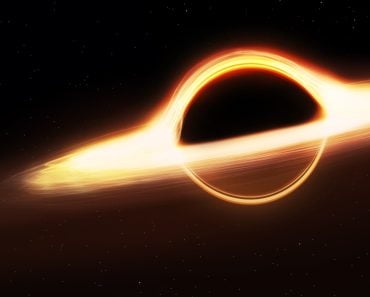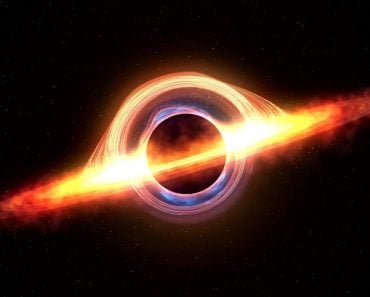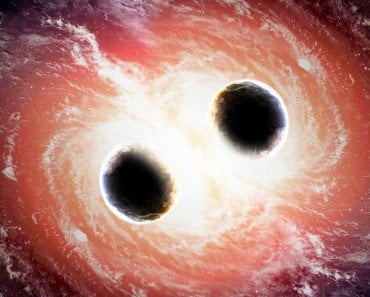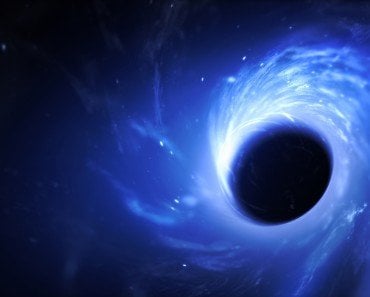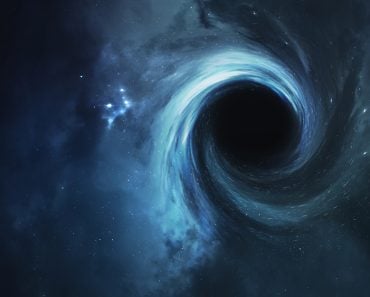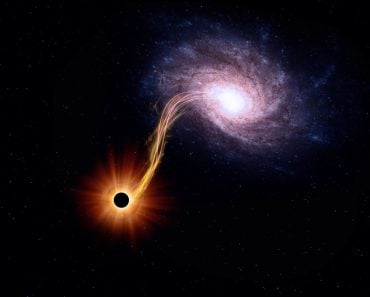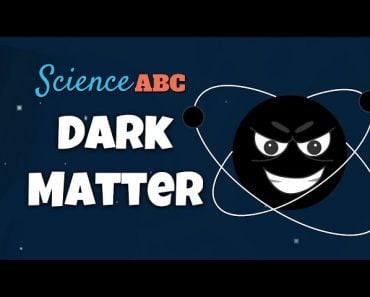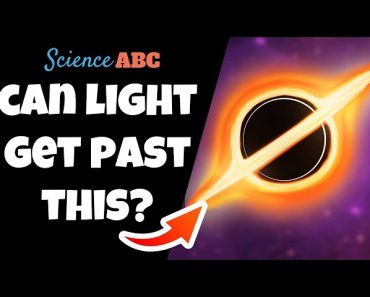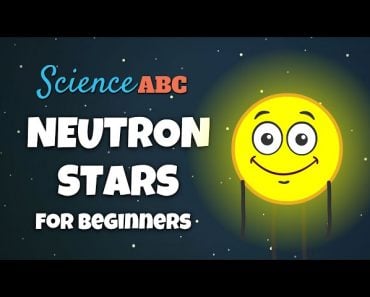Table of Contents (click to expand)
White holes are theoretical cosmic phenomena that function in the opposite way as black holes; instead of attracting matter into an infinitely dense singularity due to immense gravity, it pushes out matter and light, preventing anything from re-entering past its event horizon.
If you’ve ever watched a sci-fi movie or have even a vague knowledge about astronomical discoveries over the past century, then you’ve surely come across the term “black hole“.
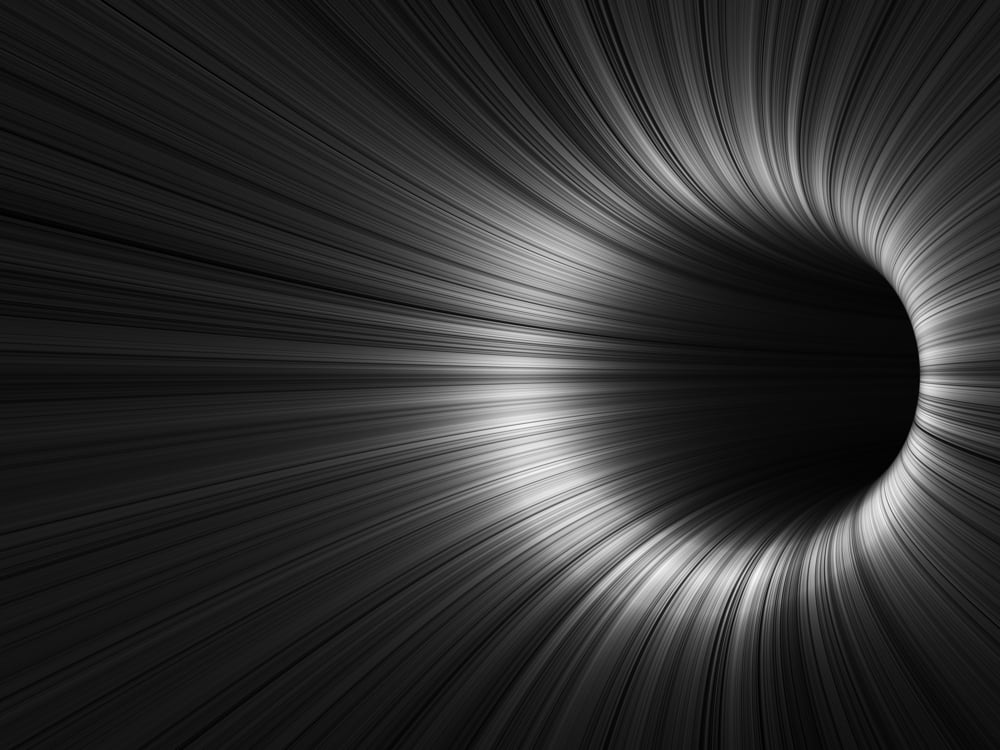
This concept has only been around for a century, yet they have become one of the most fascinating and mysterious phenomena in the cosmos. However, they are far from the strangest; that distinction may belong to their theoretical twins—white holes.
Recommended Video for you:
What Is A Black Hole?
Before we can start to unravel the deeply bizarre idea of white holes, we should establish a better understanding of black holes. These gravitational monsters are like the vacuum cleaners of the universe, inexorably sucking up anything within reach; the strength of their pull is immense, so strong that light itself cannot escape once it has crossed the black hole’s event horizon—the point of no return.
A black hole is invisible, since no light or radiation can escape from their pull, but we are able to locate them due to the gravitational effects they have on stellar bodies around them. For example, it is believed that every galaxy has a supermassive black hole at its center, which may have formed at the same time as the galaxy itself. These black holes may contain a mass of more than 1 million suns, yet be compressed into a ball the size of a single sun! That “ball” is called a singularity, a concentrated point of infinite density.
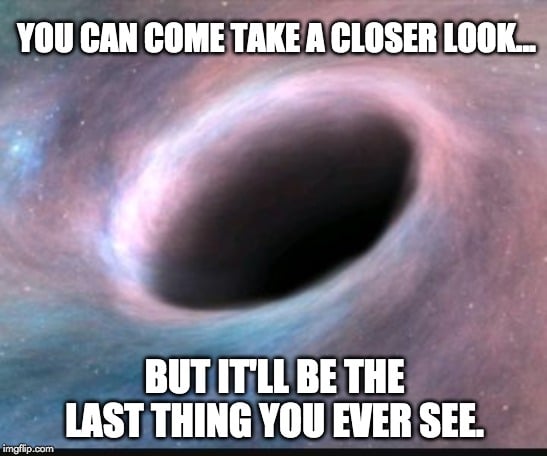
Medium-sized black holes, called stellar black holes, are created at the end of a star’s life, after undergoing the volatile expansion, contraction and explosion of a supernova. Not all stars will undergo this dramatic death, but the biggest ones invariably do. Finally, the smallest black holes, often referred to as primordial black holes, are theorized to have been formed at the very start of the universe, during the first few instants following the Big Bang. These could be as small as an atom, yet contain the mass of an entire mountain.
First theorized by Albert Einstein in 1916, the challenge of studying black holes has left them as a cosmic enigma, but many elements of gravitational theory and quantum mechanics have been explored in relation to the idea and strange physics of black holes.
One of the more interesting developments regarding black holes in came in the mid-1970s from renowned physicist Stephen Hawking. It was then that he theorized Hawking radiation—a form of energy “leaking” out of black holes. This has led to the speculation that black holes can eventually wither and “die”, which has made the discussion of white holes far more intriguing and popular in the past few decades.
Also Read: How Many Black Holes Are There In The Universe? How Do We Estimate This Number?
What Is A White Hole?
As mentioned above, white holes are the theoretical opposites of black holes. They are theorized to exist based on the very same math and general relativity concepts as black holes, although we have yet to identify a stable example in the universe. If you were to observe a white hole from a distance, it would look very much like a black hole functioning in reverse, with light and matter slowly spewing outwards from what would otherwise look like a black hole. It is theorized that nothing is able to penetrate past a white hole’s event horizon, just as nothing can escape from within a black hole’s event horizon.
The great mystery of such a white hole (as presently theorized) is that nothing could ever impact the contents of the white hole, the singularity, meaning that some element of the infinite past could have an impact on our present, but we could have no effect on it, no matter how hard we tried.
Concepts of time, space, mass and density become much more complex when discussing black holes, since they remain so clouded in mystery, largely due to the predictions and theories laid out in general relativity and Einstein’s field equations. It is believed that black holes enable time and space to be folded into themselves so far that they completely pinch off from our accessible reality.
In theory, a white hole would be the reverse of this, perhaps even existing as the “other side” of a black hole that emanates out somewhere else in the universe (similar to a wormhole) or into a different universe entirely. After Hawking’s revelation of black hole dissipation through Hawking radiation, an important question was raised: if matter/information within the universe cannot be destroyed, what happens when a black hole withers away. Some have theorized that at the end of a black hole’s life—potentially quadrillions of years in the future—it would “bounce back” as a white hole. This is a neat end-around to the paradox of disappearing mass.
Other researchers have focused on primordial black holes, arguing that since space-time is so bent in a black hole, that many of these primordial black holes could be fluctuating into white holes all the time for short-lived bursts, even for just a few instants. Some have argued that supernovae that we detect in the far reaches of the universe may in fact be the disseminations of these white holes!
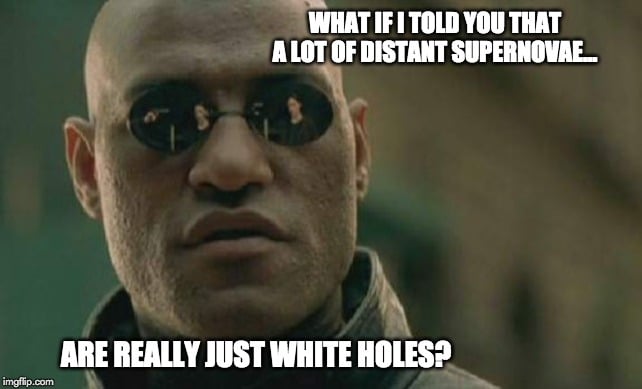
There are also those scientists who are proposing that white holes are linked to the massive amount of dark matter we have detected in our universe. We have no explanation as to the origin or makeup of this matter, only its gravitational effects on the surrounding space. While the direct connection between dark matter and white holes (which theoretically emit mysterious matter/energy) remains loose and completely unproven, it is an interesting link to consider.
However, there is a reason that all of these ideas remain strictly theoretical. The idea of a “black hole in reverse” is contrary to the statistically proven fact that the universe is entropic, meaning that it moves towards chaos, rather than order. If you extrapolate a white hole to its natural endpoint, after it pushes out all the mass it contains, it should re-form into the star that initially exploded to form the black hole. This goes against everything that we currently know about physics and the nature of our universe.
A Final Word
While white holes make for an interesting thought experiment, and seem to hold up in theoretical calculations, we cannot say with any proof that they exist in this universe (or any others). However, this is an exciting new time for astronomy, as bigger and better satellites and instruments are constantly being launched among the stars, promising to deliver more information and truths about the cosmos than human beings have ever known before. Like so many other “crazy” ideas before it, perhaps the theory of white holes is simply waiting to be proven, with the truth lurking out there among the shadowy mysteries of our universe.
Also Read: What Are Wormholes?
References (click to expand)
- Are White Holes Real? | NOVA - PBS. The Public Broadcasting Service
- J Wall. What Is a Black Hole? - NASA. The National Aeronautics and Space Administration
- Hawking, S. W. (1976, January 15). Black holes and thermodynamics. Physical Review D. American Physical Society (APS).
- Wald, R. M., & Ramaswamy, S. (1980, May 15). Particle production by white holes. Physical Review D. American Physical Society (APS).
- Chatterjee, B., Ghosh, A., & Mitra, P. (2008, March). Tunnelling from black holes and tunnelling into white holes. Physics Letters B. Elsevier BV.
- Strominger, A. (1993, December 15). White holes, black holes, andCPTin two dimensions. Physical Review D. American Physical Society (APS).

